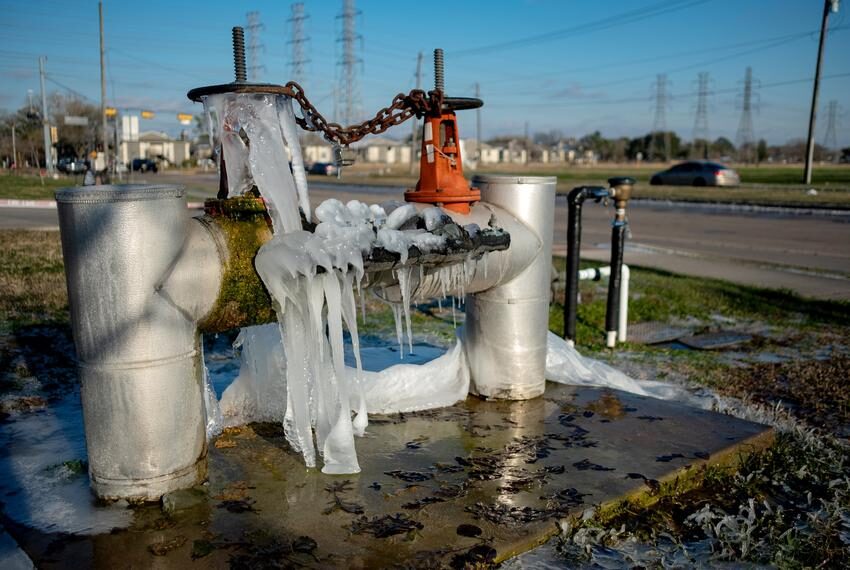Blog
Will We Achieve Net-Zero Emissions By 2035? A National Clean Electricity Standard Could Be Key
February 26, 2021
Post Author

Last week, public officials including Texas Governor Greg Abbott blamed widespread power outages in his state on wind and solar energy, stating on Fox News that “Our wind and our solar got shut down, and they were collectively more than 10 percent of our power grid, and that thrust Texas into a situation where it was lacking power on a statewide basis. … It just shows that fossil fuel is necessary.”
While most of us who read about energy slapped our palms to our foreheads, many people believed Governor Abbott and blamed renewable energy for power outages. Fortunately, news organizations like The Texas Tribune, The Washington Post, and CBS News published articles fact-checking the Governor, pointing instead to the widespread disruption of natural gas plants and pipes that provide the majority of electricity generation in Texas (and other states and regions, including much of Mexico), as well as Texas’ refusal to winterize its fossil fuel and renewable assets on the grid (plenty of turbines operate in colder climates perfectly well around the world.)
Ironically, Governor Abbott targeted renewable energy just as The New York Times was writing that Texas’ grid trouble is a sign of disruption to come as climate change induces more and more extreme weather events. Whether or not the extreme storm in Texas can be directly attributed to human activities, its story is a portent of climate change.
The Push to Decarbonize by 2035
This brings me to President Joe Biden’s goal to decarbonize our economy by 2035 to avoid the worst effects of climate change. At the top of that plan is achieving zero-carbon electricity generation, which will also enable clean electrification of the rest of the economy (electric vehicles, heat pumps, and heavy industry) to cut overall emissions by 70-80%. But how can we get there?
Democrats now control the White House and both chambers of Congress. Just as President Obama passed the Affordable Care Act in the two short years when Democrats had a unified government, this could be the country’s chance to enact aggressive and long-lasting climate legislation.
One policy is starting to stand out against the crowd: the National Clean Electricity Standard. Standards like this have been used across industries to influence commercial activities (think OSHA to protect workers on the job). The Clean Electricity Standard would direct electric utilities all across the U.S. to phase in renewable energy to achieve carbon pollution-free generation by 2035.
Clean electricity standards are not new. Ten states and 170 cities have adopted 100% clean electricity standards. Most of these states have created a system of zero-emission electricity credits (ZECs) to measure progress. If utilities don’t meet a goal, they buy ZECs from the government. This system or many iterations of it could be enacted by Congress to achieve a national standard.
There are other ways to achieve decarbonization – like pricing carbon or using a Cap and Trade system – but a national standard has been tried and tested in successful environmental legislation before, including the Clean Air Act of the 1960s and the Clean Water Act of the 1970s. In a nutshell, this mechanism allows the government to set a standard and timeline based on technology and scientific guidelines.
Unlike the Obama Administration’s Clean Power Plan, which directed states to meet decarbonization goals, the National Clean Electricity Standard would be federal legislation to encourage electric utilities to cut emissions. Former President Trump dismantled the Clean Power Plan with an executive order, something that a future president could not do to an established piece of legislation.
Do We Have the Political Will?
According to a poll from Yale University and George Mason University, over 80% of Americans say that 100% clean energy should be a U.S. energy goal. Researchers have also found that transitioning to a grid powered by renewables will save consumers about 10% on their electricity bills.
While Republicans in Congress have traditionally followed advice from the fossil fuel industry, the prospect of creating millions of good-paying jobs through the Clean Electricity Standard in wind, solar, and other zero-carbon technologies will be a hard opportunity to ignore. Projections show the U.S. could see an additional 500,000 to 1 million more good-paying jobs in the energy sector by 2030.
While the National Clean Electricity Standard is the essential policy to spur decarbonization, other policies are needed to drive environmental justice and workforce development to ensure equitable economic and social outcomes. Some of these policies may include federal clean energy investments, tax credits and rebates to spur vehicle and building electrification, and promoting electricity market competition and innovation.
To learn more about the initiative for a National Clean Electricity Standard check outEvergreen Action.









